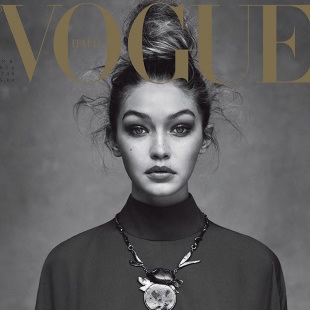Bethann Hardison is slated to receive a CFDA award this spring for her work in diversifying the fashion industry. The activist and founder of The Black Girl Coalition joined fashion critic Robin Givhan and racial discrimination lawyer Cyrus Mehri to discuss the state of diversity on the runway at Fordham Law School on Friday.
Although the executive suites of fashion’s biggest houses are no more diverse than the models who appear in their advertisements, diversifying the modeling industry in many ways starts on the runway, Givhan says. A model’s popularity on the runway frequently determines her placements in the most prominent ad campaigns and editorials.
Up until relatively recently, the fashion industry was not something that everyday people had access to, nor did they care much about its inner workings, Hardison explains. But now that it has become part of popular culture, the models designers employ are much more important.
«Back in the ’50s and ’60s and ’70s, it was this very walled-off world,» Givhan adds. «The vast majority of people engaged it through a trickle-down effect. It wasn’t one in which the models trickled down, just the clothes.»
Models were rarified creatures, she says, but they weren’t as pervasive. With today’s ubiquity of billboards, magazine editorials and advertisements — not to mention reality television modeling competitions — it’s much more important for industry players to understand the ripple effect in the public psyche of which models get air time.
«Who walks on the runway defines beauty, which defines how we value people. The fashion industry has a profound effect on who we value,» she says.
But the topic of race in fashion is often complicated by the issue of aesthetics, Givhan says.
«It’s the only industry where someone can be told that they’re not right because their nose is too big, and that’s completely legitimate,» she says.
Colorism — discrimination against darker complexioned African Americans in favor of those with lighter skin tones — is another aspect of racism that is difficult to tackle, especially from a legal standpoint, Mehri says. In surveys, a person identifies as African American; the shade of his or her skin isn’t something that is reflected in the data.
When Alek Wek was put on the Nov. 1997 cover of Elle, the strongest criticism of the decision came from other African American women because of the darker color of her skin, Givhan says.
But as Hardison has said before, she’s seeing change. She notes that when she calls out the fashion industry on its racial discrimination, she’s not looking to alienate anyone, but rather educate them. Many of the instances of racism in the fashion industry — Viktor & Rolf using blackface in a fashion show, for instance — comes down to ignorance, she says.
«If you’re stupid you can be educated,» Hardison says. «If you’re slow, you can be educated.»







Comments 0